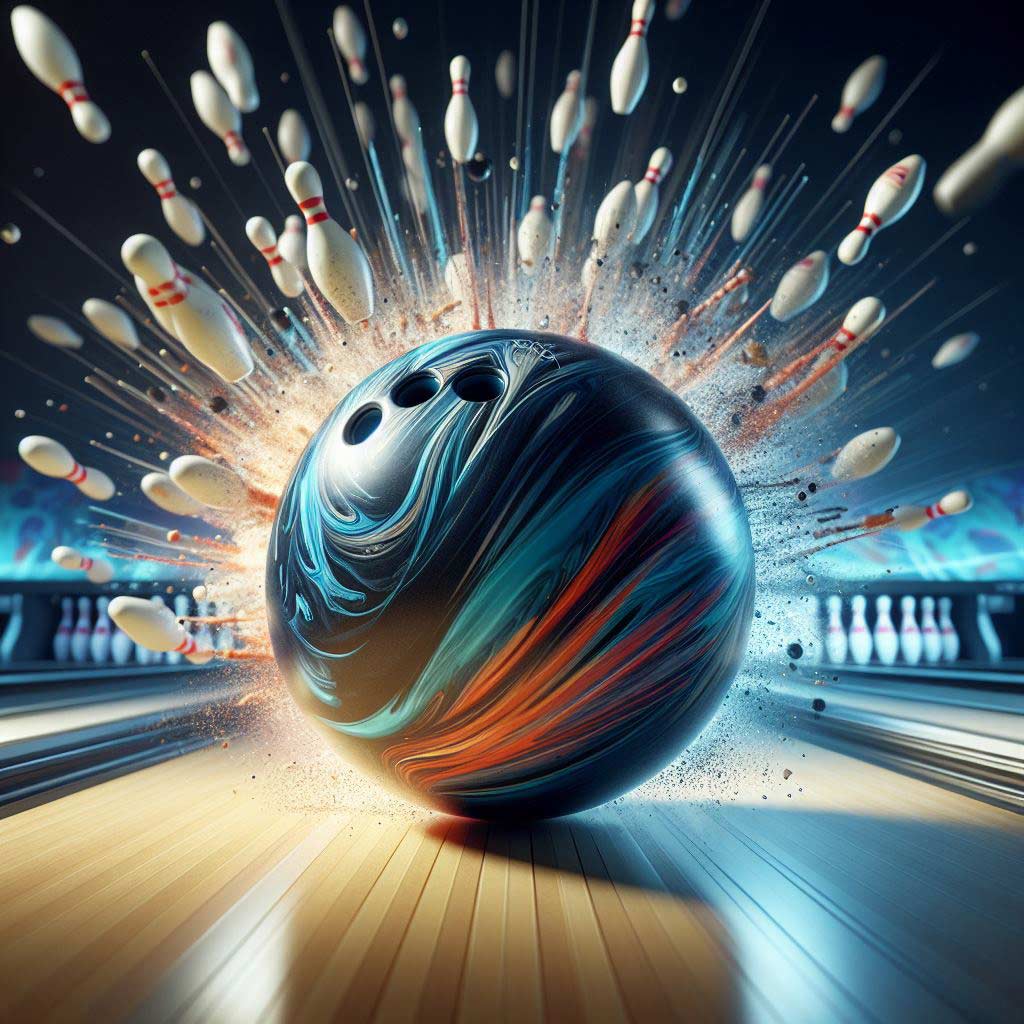If you’re a serious bowler looking to take your game to the next level, you’ve likely heard about the benefits of urethane bowling balls.
Unlike reactive resin balls, urethane coverstock offers increased control, a more aggressive hooking motion, and better overall predictability on various lane conditions. And when it comes to top-quality urethane balls, few brands can match the reputation and performance of Roto Grip.
In this ultimate guide, we’ll dive deep into the world of Roto Grip urethane bowling balls. We’ll explore what makes urethane coverstocks unique, highlight some of Roto Grip’s most popular urethane offerings, and provide tips on how to select and maintain these balls for optimal performance.
Whether you’re a seasoned pro or an amateur looking to refine your skills, this comprehensive resource will help you unlock the true potential of Roto Grip urethane balls.
Roto Grip Urethane Ball Overview
Before we get into specific ball models, let’s first understand what sets urethane balls apart from their reactive resin counterparts. Urethane is a type of coverstock material that offers a gritty, porous surface texture. This allows urethane balls to create more friction and generate a stronger hooking motion compared to smooth resin covers.
Roto Grip has been at the forefront of urethane ball design and manufacturing for decades. Their urethane lineup is renowned for providing exceptional traction on the lane, amplified backend hook potential, and remarkable durability that can withstand the rigors of frequent competitive play.
One of the standout characteristics of Roto Grip urethane balls is their ability to react consistently on different lane conditions. Whether you’re facing a freshly oiled pattern or a burned-up, dry lane, these balls can adapt and maintain their aggressive yet controllable motion, giving you a reliable weapon in your bowling arsenal.
Popular Roto Grip Urethane Ball Models
Roto Grip has an extensive range of urethane balls to cater to various playing styles and preferences. Here are some of their most popular and highly acclaimed models:
- Hustle Camo – The Hustle Camo is a true workhorse in the Roto Grip urethane lineup. With its iconic camouflage design and durable urethane-D84 coverstock, this ball is built for heavy oil conditions. The Hustle Camo’s tremendous traction and backend continuation make it a favorite among bowlers who demand maximum hooking potential without sacrificing control.
- Hustle Ink – For those seeking a balance between aggression and versatility, the Hustle Ink is a fantastic choice. Its urethane cover is paired with a potent RAD-X core, producing a strong yet controllable motion that excels on medium to heavy oil patterns. The Hustle Ink’s combination of hook and forgiveness makes it a go-to option for bowlers at all skill levels.
- Hustle Rap – If you’re looking for a urethane ball that can handle a wide range of lane conditions, the Hustle Rap is a reliable option. Its urethane-D49 cover provides just the right amount of traction, while the Rap core geometry promotes an earlier, smoother roll for added control. This versatility makes the Hustle Rap a favorite for bowling center operators and league bowlers alike.
- Hustle Au – For bowlers who prefer a more skid-flip motion, the Hustle Au is a standout choice. Its urethane-D49 cover and low RG Au core create a longer, smoother roll followed by an intense backend snap. This ball excels on drier lanes and can be a real score-maker in the right hands.
Matching Roto Grip Urethane Balls to Lane Conditions
One of the keys to maximizing the performance of your Roto Grip urethane ball is understanding how to match it to the specific lane conditions you’re facing. Here are some general guidelines:
- Light Oil Conditions: For drier lanes with lighter oil volumes, consider a ball like the Hustle Au or the Hustle Rap. These balls will provide the necessary traction and backend reaction to navigate the drier surfaces without over-hooking or losing energy too early.
- Medium Oil Conditions: When facing moderate oil patterns, the versatile Hustle Ink or the Hustle Camo can be excellent choices. These balls strike a balance between traction and continuation, allowing you to create a strong yet controllable hook motion on medium oil volumes.
- Heavy Oil Conditions: For heavily oiled lanes or fresh patterns, the ultra-aggressive Hustle Camo is often the go-to ball. Its potent urethane-D84 cover and stout core can plow through the oil and generate tremendous traction, making it ideal for heavy oil scenarios.
It’s also important to consider factors like your bowling style, rev rate, and ball speed when selecting the right Roto Grip urethane ball. For example, high rev-rate players may prefer more aggressive balls like the Hustle Camo, while straighter players might benefit from the controlled motion of the Hustle Rap or Hustle Ink.
Additionally, the drilling layout and surface preparation can significantly impact a ball’s motion and performance. Consult with a professional ball driller or pro shop operator to fine-tune your Roto Grip urethane ball’s layout and surface to match your specific needs and preferred lane conditions.
Maintaining and Resurfacing Urethane Balls
Proper maintenance is crucial for keeping your Roto Grip urethane balls in top condition and ensuring consistent performance over time. Here are some best practices for caring for your urethane balls:
- Regular Cleaning: After each bowling session, be sure to thoroughly clean your Roto Grip urethane ball using a specialized ball cleaner and a microfiber towel. This will remove any dirt, oil, or debris that can accumulate on the porous urethane surface, which can affect traction and ball reaction.
- Resurfacing: Over time, the surface of your urethane ball will become dulled and worn, impacting its hooking potential and overall performance. Resurfacing is the process of restoring the ball’s surface texture and effectively “resetting” its reaction characteristics.
There are two main options for resurfacing your Roto Grip urethane ball:
- DIY Resurfacing: For those comfortable with basic ball maintenance, you can perform a DIY resurface using speciality pads or abrasive materials like Abralon pads or Scotch-Brite pads. This involves carefully and evenly sanding down the surface to remove the dulled outer layer and expose fresh urethane underneath.
- Professional Resurfacing: Many pro shops and bowling centers offer professional resurfacing services using specialized equipment like ball resurfacing machines. This ensures a precise and consistent surface texture across the entire ball, which can be challenging to achieve through DIY methods.
Regardless of the method you choose, it’s essential to follow the recommended guidelines and techniques to avoid damaging your Roto Grip urethane ball’s coverstock or altering its weight or balance properties.
Pros and Cons of Urethane vs. Reactive Resin Balls
While urethane balls like those from Roto Grip offer many benefits, it’s important to understand how they compare to reactive resin balls, which are another popular ball type. Here’s a side-by-side look at the pros and cons of each:
Urethane Balls (Roto Grip): Pros:
- Increased traction and hooking potential
- More predictable and controllable motion
- Better performance on drier lane conditions
- Durable and longer-lasting coverstock
Cons:
- Less energy transfer/carry potential compared to reactive resin
- Can be more challenging to control for some bowling styles
- May require more surface adjustments and maintenance
Reactive Resin Balls: Pros:
- Higher potential for strike carry and pin action
- Longer overall hook potential on heavier oil patterns
- Generally more forgiving for less experienced bowlers
- Variety of coverstock options (solid, pearl, hybrid)
Cons:
- Can be less predictable and harder to control on drier lanes
- Coverstocks wear out faster, requiring more frequent ball changes
- Potential for over/under reaction on certain lane conditions
As a general rule, urethane balls like those from Roto Grip are often preferred by more experienced bowlers who prioritize control, predictability, and performance on drier lane conditions.
Reactive resin balls can be a better fit for bowlers seeking maximum strike potential and versatility across a wider range of oil patterns, albeit with slightly less predictability.
The decision ultimately comes down to your individual bowling style, ability level, and the specific lane conditions you typically face. Many competitive bowlers choose to have both urethane and reactive resin balls in their arsenal, allowing them to adapt their equipment to different situations.





